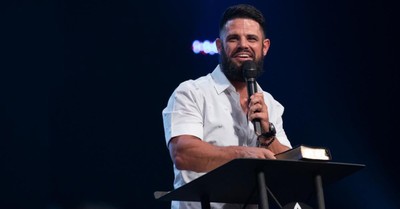A new study by the Barna Research Group (BRG) finds that, while there is a growth in religious activity among adults in the U.S., church involvement has remained flat over the past decade - a fact with disturbing implications for the Church in America.
For two decades BRG has conducted an annual tracking survey of religious behavior in the U.S. This year's study, which concluded in mid-February, discovered significant change in some of the behaviors measured. For instance, 44 percent of adults said they read from the Bible during the past week, other than while at church. That statistic is up from 37 percent in 1994. The survey also found that Bible reading jumped most noticeably among Protestants and Evangelical Christians, and among residents of the western states of Oregon, California, and Washington.
Also, ten years ago, just 12 percent of adults took part in weekly small religious groups that met for the purpose of prayer, Bible study, or spiritual fellowship. Now that number has increased to 20 percent of adults taking part in small group meetings. The biggest increase among those participating in such groups was among men, a 100 percent forward leap to 18 percent. And again, Protestants and western U.S. residents showed marked increases in small group participation.
And the final area of growth indicated by Barna's studies was personal prayer. Although BRG has only tracked this area since 1999, the research shows that the number of people who said they had prayed to God during the past week went up from 77 percent to 83 percent between 1999 and 2004. And this time, during that five-year interval, the biggest increases among people engaging in this area of religious activity were seen among residents of the Northeast (rising from 71 percent to 80 percent) and among atheist or agnostic respondents (which nearly doubling from 20 percent to 39 percent).
Religious Inactivity in the Church?
However, not all the religious trends BRG tracked exhibited a positive slope. As author and researcher George Barna points out that, among those trends that did rise, most of these instances of growth in individuals' religious activity did not happen in churches. "That's kind of a challenge for churches to think about," he says.
Barna feels that the revelations of the BRG survey should compel Christian leaders to ask some pertinent questions. "Are people telling us that their lifestyles are now so different that the way that they're experiencing their faith and pursuing their faith also has to shift?" he wonders.
In fact, the survey showed that those religious trends studied that involve church attendance and church-related activities have remained relatively flat over the past decade. These trends include church attendance (which was at 42 percent in 1994, and 43 percent in 2004); volunteering to help the church (25 percent then, and 24 percent now); attending adult Sunday school classes (21 percent both then and now); and, among born-again Christians, sharing one's faith in Jesus with non-believers (58 percent in 1999, and 55 percent in 2004).
The founder of BRG says the study's results should concern pastors; and for all Christian leaders, it should raise questions about how the Church should respond to the trends. For instance, Barna says, "We continue building so many more buildings. In America right now there's more than three billion dollars of new building, new construction, taking place for churches. So this may be one of those things that challenges the wisdom of doing that when we look down the road."
Certainly, church growth appears to be a legitimate concern, especially when one examines the generational patterns of religious activity revealed by the study. Across the board, older adults were most heavily involved in religious activities, with Baby Boomers less involved than that group, and Baby Busters less involved than the Boomers. The only area in which there was an increase in Buster involvement over the past ten years was in Bible reading.
A Hopeful Interpretation
But despite the suggested generational decline in religious involvement, Barna says there are some patterns that could indicate the beginning of a spiritual revival in the U.S. One such pattern is the geography of behavioral change, which led the researcher to make an interesting observation.
"If you study how behavioral trends evolve in America," Barna says, "they usually start in the west, take hold in the northeast, then infiltrate the interior of the nation. The fact that we are witnessing slow but steady development of more traditional religious behavior in the western states raises the possibility that over the coming decade we will see commitment to such behavior take root in the heartland as well."
The Christianity and Church culture analyst says in light of the revelations of this study, he looks forward to watching the overall pattern unfold and observing what lies ahead for the Church. "It will be an interesting time coming up, seeing what this really means, or [whether it's] just kind of a quirk over the long haul," Barna says.
Barna Research Group (http://www.barna.org)
© 2004 Agape Press. All rights reserved. Used with permission.










